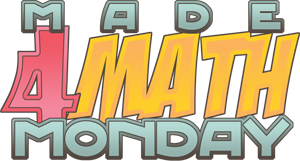
I was in #Statschat last Thursday and we were discussing the usage of technology to simplify Statistics calculations and when it is appropriate to still make the students go through the motions of learning methods which might not be the best ways to find solutions given the complexity of some of the calculations.
The conversation started over discussing whether or not students still needed to learn the Empirical Rule, or how to use Normal Distribution tables or find standard deviation with the traditional equation.
I show my students the equation, we talk about what each of the variables
What I have my students do is use a table which seems to simplify the process.
I write in "n = " under "n is the number of numbers in the data set"
We complete the table just to find the sum of "deviation squared" and then use that number in the equation below.
The first one we do together, then I throw another one at them to work on and then compare with their partners.
We do some homework on these (and other measures of central tendency) but only a few of them (and most students get a good portion of it done before leaving class and then the next day I review the two methods before sharing the method for finding standard deviation (and most of the other measures of central tendency) on the Nspire (which I had planned to add here, but don't seem to have with me at the moment)









.JPG)